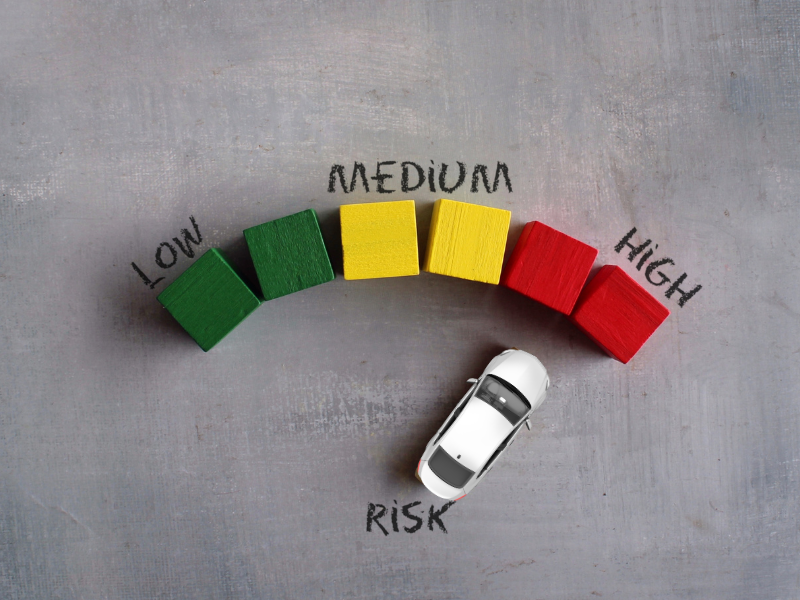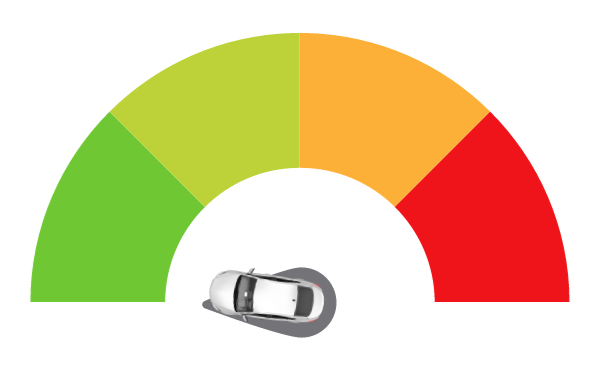
Are you a High Risk Driver?
Insurance providers categorize certain individuals as high-risk drivers based on various factors that increase the likelihood of accidents or claims. These factors can result in higher insurance premiums or, in some cases, difficulty in obtaining coverage. Some common characteristics that insurance providers deem as indicative of a high-risk driver include:

1. History of Accidents: Individuals with a history of frequent accidents or multiple claims are often considered high-risk. Previous involvement in collisions suggests a higher probability of future incidents, prompting insurance providers to view these individuals as risky to insure.
2. Traffic Violations: A track record of traffic violations, such as speeding tickets, reckless driving, or driving under the influence of alcohol or drugs, can significantly impact an individual’s risk profile. These violations indicate a potential disregard for traffic laws and safety regulations, leading insurance providers to perceive these individuals as high-risk drivers.
3. Inexperienced Drivers: Newly licensed drivers, particularly teenagers or young adults, are often classified as high-risk due to their lack of driving experience. Inexperience on the road increases the likelihood of accidents, prompting insurance providers to charge higher premiums or apply stricter underwriting criteria.
4. Poor Credit History: Some insurance companies consider an individual’s credit history as a factor in determining their risk level. A poor credit history may suggest financial instability, leading insurers to view the individual as more likely to file claims or miss premium payments, thus categorizing them as high-risk drivers.
5. Driving Record: A history of frequent insurance claims, even if they do not involve accidents, can also lead to the classification of a high-risk driver. For instance, multiple claims for theft, vandalism, or weather-related damage may result in higher premiums or limited coverage options.
6. Vehicle Type and Usage: Drivers of high-performance or luxury vehicles, as well as those who use their vehicles for commercial purposes, are often considered high-risk. The cost of repairing or replacing these vehicles is typically higher, leading insurers to perceive these drivers as more likely to file expensive claims.
Insurance providers carefully assess these and other risk factors to determine the appropriate premium rates and coverage options for each individual. While being labeled a high-risk driver can result in increased insurance costs, taking proactive steps to improve driving habits, maintain a clean record, and adhere to traffic laws can eventually help lower insurance premiums over time.
What would make me a Safer Driver?

In the dynamic world of driving, safety is paramount. It isn’t just about adhering to the traffic rules or being attentive behind the wheel; it’s also about the enhanced skills and awareness that safe drivers and those with advanced driving training possess. These individuals not only contribute to making the roads safer for everyone but also enjoy numerous personal benefits. From financial incentives to personal well-being, the advantages are diverse and significant.
Financial Incentives
One of the most tangible benefits that safe drivers enjoy is financial savings. Insurance companies often recognize the reduced risk associated with drivers who have a history of safe driving or have undergone advanced training. Lower premiums and discounts are commonplace for these individuals. It is here where the strategies of car insurance quotes become particularly relevant. The insurance industry is well-known for rewarding safe driving habits with reduced premiums, acknowledging that a safe driver is less likely to be involved in accidents, thus posing a lower risk.
Enhanced Driving Skills
Advanced driving training equips drivers with skills that go beyond the basics. Defensive driving, emergency responses, and optimal use of vehicle features are some of the areas covered in such training. These enhanced skills not only make driving safer but also more enjoyable. Drivers with advanced skills are adept at handling a variety of road conditions and traffic situations, contributing to their confidence and composure on the road.
Personal Well-being
Safe driving and advanced skills also have a direct impact on personal well-being. The confidence gained from enhanced skills contributes to reduced stress levels while driving. Knowing how to respond in emergency situations not only makes one a safer driver but also instills a sense of security. This peace of mind is invaluable; it extends beyond the driver to their families and loved ones, knowing that safety is a priority.
A Safer Community
Safe drivers play a crucial role in making roads safer for everyone. Their adherence to traffic rules, enhanced awareness, and advanced skills contribute to reduced accident rates. This not only protects lives but also reduces the burden on emergency services and healthcare systems. A culture of safe driving fosters a sense of responsibility among all road users, encouraging a collective effort towards safer roads.
Environmental Benefits
Safe driving habits and advanced training often lead to more efficient driving styles. Efficient driving results in reduced fuel consumption and lower emissions, contributing to environmental preservation. Drivers become more aware of their driving habits and are motivated to adopt practices that are not only safe but also eco-friendly.

The benefits of being a safe driver or acquiring advanced driving training are multifaceted, permeating personal, financial, and societal spheres. It underscores the importance of continuous learning and adherence to safe driving practices. As we navigate through the evolving landscape of driving, marked by the advent of autonomous vehicles and smart roads, the role of the safe driver remains pivotal. Their contribution is not just about reducing accident rates but about fostering a culture of safety, responsibility, and efficiency that benefits all members of society.

